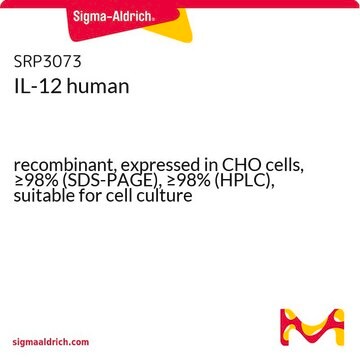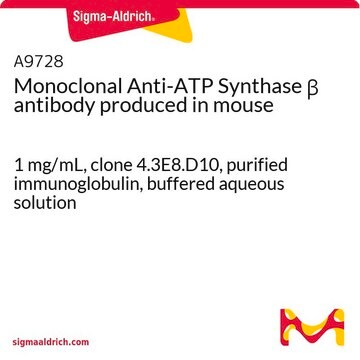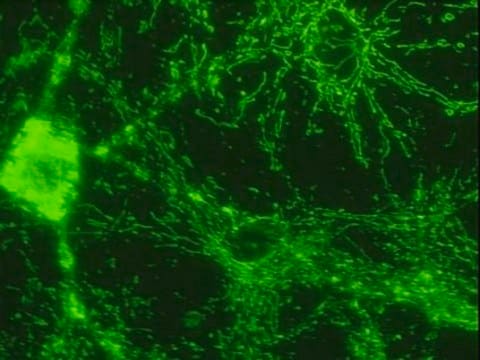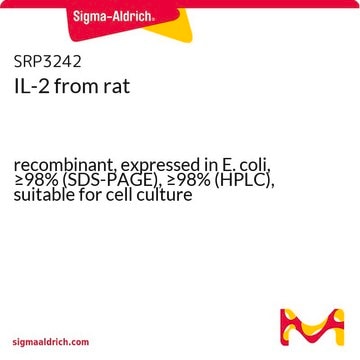MABS1304
Anti-ATP Synthase subunit β Antibody, clone 11/21-7-A8
clone 11/21-7-A8, from mouse
Synonim(y):
ATP synthase subunit beta, mitochondrial, ATP Synthase subunit β, beta-F1-ATPase
About This Item
Polecane produkty
pochodzenie biologiczne
mouse
Poziom jakości
forma przeciwciała
purified immunoglobulin
rodzaj przeciwciała
primary antibodies
klon
11/21-7-A8, monoclonal
reaktywność gatunkowa
human, mouse, rat
metody
ELISA: suitable
dot blot: suitable
immunocytochemistry: suitable
western blot: suitable
izotyp
IgG1κ
numer dostępu NCBI
numer dostępu UniProt
Warunki transportu
wet ice
docelowa modyfikacja potranslacyjna
unmodified
informacje o genach
human ... ATP5B(506)
Opis ogólny
Immunogen
Zastosowanie
ELISA Analysis: A representative lot detected His-tagged full-length human ATP Synthase subunit β (beta-F1-ATPase) recombinant protein by direct ELISA (Acebo, P., et al (2009). Transl Oncol. 2(3):138-145).
Dot Blot Analysis: A representative lot detected ATP Synthase subunit β (beta-F1-ATPase) by Dot blot using His-tagged full-length human beta-F1-ATPase recombinant protein or HepG2 lysate (Acebo, P., et al (2009). Transl Oncol. 2(3):138-145).
Western Blotting Analysis: A representative lot detected ATP Synthase subunit β (beta-F1-ATPase) in human hepatoma HepG2, murine hepatoma Hepa 1-6, and normal rat liver epithelial C9 (Clone 9) cells.
Western Blotting Analysis: A representative lot detected ATP Synthase subunit β (beta-F1-ATPase) expression in various cancer patients tissues (Acebo, P., et al (2009). Transl Oncol. 2(3):138-145).
Western Blotting Analysis: A representative lot detected ATP Synthase subunit β (beta-F1-ATPase) downregulation in HCT116 human colon cancer cells in response to AMPK pathway activation upon oligomycin or AICAR treatment (Martinez-Reyes, J., et al. (2012). Biochem J. 444(2):249-259).
Signaling
Developmental Signaling
Jakość
Western Blotting Analysis: 0.5 µg/mL of this antibody detected ATP Synthase subunit β in 10 µg of HepG2 cell lysate.
Opis wartości docelowych
Postać fizyczna
Przechowywanie i stabilność
Inne uwagi
Oświadczenie o zrzeczeniu się odpowiedzialności
Not finding the right product?
Try our Narzędzie selektora produktów.
Kod klasy składowania
12 - Non Combustible Liquids
Klasa zagrożenia wodnego (WGK)
WGK 1
Temperatura zapłonu (°F)
Not applicable
Temperatura zapłonu (°C)
Not applicable
Certyfikaty analizy (CoA)
Poszukaj Certyfikaty analizy (CoA), wpisując numer partii/serii produktów. Numery serii i partii można znaleźć na etykiecie produktu po słowach „seria” lub „partia”.
Masz już ten produkt?
Dokumenty związane z niedawno zakupionymi produktami zostały zamieszczone w Bibliotece dokumentów.
Nasz zespół naukowców ma doświadczenie we wszystkich obszarach badań, w tym w naukach przyrodniczych, materiałoznawstwie, syntezie chemicznej, chromatografii, analityce i wielu innych dziedzinach.
Skontaktuj się z zespołem ds. pomocy technicznej








